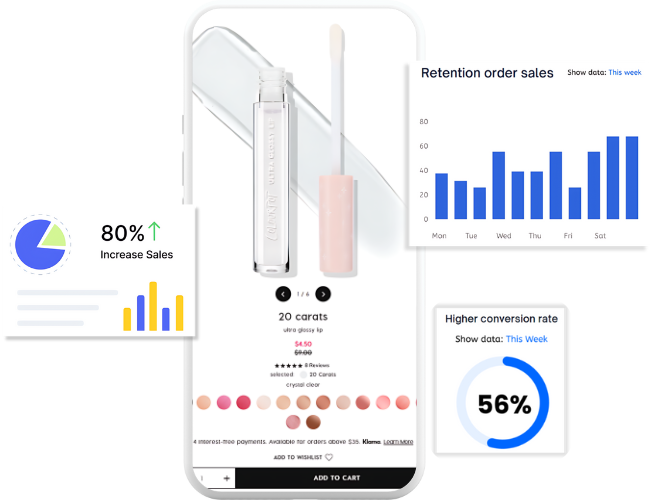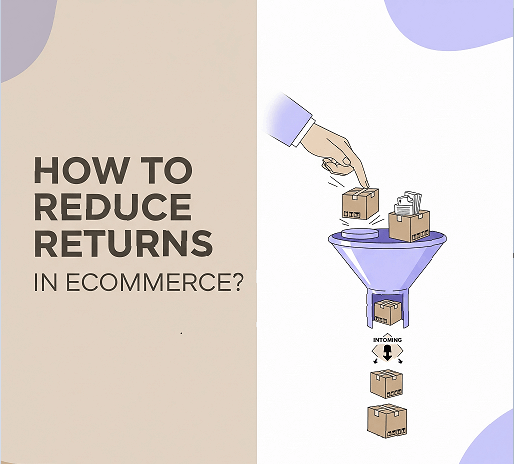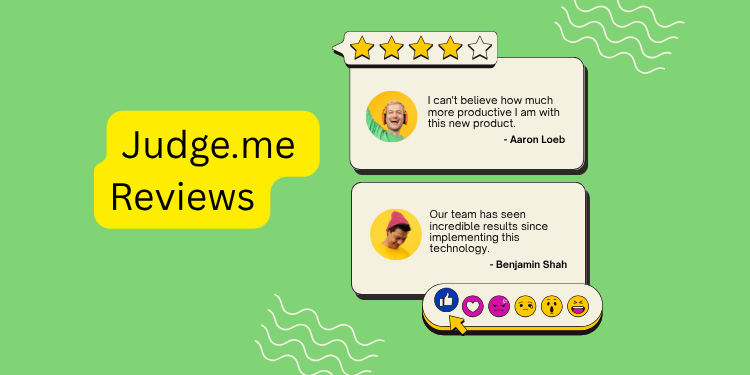The purchasing experience can have an impact on customer decisions. Take measures at each stage in the purchase decision process to make your business thrive. Our article will help you understand the details at each step and how to improve the competitiveness of your store!
What is the purchase decision process?
Customers must go through several steps in the purchase decision process before they acquire a good or service. The consumer decision-making process encompasses 5 stages, which are problem recognition, information search, alternative evaluation, purchase decision, and post-purchase evaluation, covering the process from determining the need to assess a product, service, or experience before deciding which one to buy.
The importance of the purchase decision process
Optimize the customer experience
A well-designed buyer decision-making process facilitates seamless purchases for customers, making the entire shopping process smoother and optimizing the consumers’ purchase experience.
Brand loyalty
Customers who have a positive shopping experience may repurchase your store and recommend it to their friends and family, which indicates that they trust and identify with you, and it will help to build brand loyalty.
Improve your business
In addition to improving the user experience, a seamless checkout procedure builds consumer confidence and word-of-mouth recommendations, which invisibly boosts your store’s competitiveness and opens doors for your shop’s growth.
5 stages of the Purchase Decision Process
Let’s examine the thoughts that go through a buyer’s mind from the time they recognize a need until they complete a purchase.
Problem Recognition
The first stage of the decision-making process is that customers recognize they have a problem and require a solution. Consumers base every purchase decision on their needs, and there are two categories affecting consumption: internal and external. Internal factors include things like physical and emotional aspects, while external variables include things like advertising, seasonal changes, and more.
Meanwhile, you should concentrate on three aspects at the problem recognition stage.
Find Out the Core Need
Customers have a lot of wants, and your job is to identify the target audience’s core needs and better inform them about your products.
Use Marketing Tools
Following the identification of the fundamental demands of your target audience, you can shape consumer behavior by focusing your marketing efforts on specific markets where your products fit in.
Build Brand Loyalty
In addition, building brand loyalty to earn consumers’ confidence is important.
Example:
This customer has registered for both the running and badminton tournaments at the upcoming company’s sports meeting. Nevertheless, she discovered that her athletic shoes were worn out and made the decision to purchase a pair of lightweight, durable athletic shoes.
Information Search
Step two of the purchase decision process is for customers to obtain all the facts about the products and services after they identify a need and determine how to satisfy that wish.
There are three ways for consumers to search and gather information.
- Keywords on Search Engines
- Reviews from Others
- Personal Contact
As a brand, you can release product information on search engines, like Google, where customers browse information before purchasing. After the transaction, encouraging consumers to leave positive reviews is what you should do to improve your store’s reputation. Besides, retaining all customers’ feedback, including images and videos, helps to increase their confidence and establish your credibility as a reliable seller.
Example:
When the consumer typed in the term “women’s sports shoes” on the internet, a page featuring numerous sports shoe manufacturers and styles appeared. Based primarily on her wants, she began to gather. Also, she inquired about the product number and where other customers had purchased the item when she noticed it fit her.
Alternatives Evaluation
Evaluating alternatives means consumers debate which product, service, or brand to select. In this stage, customers compare options and make decisions based on a range of criteria using the data they have collected.
As a brand, getting customers to follow your store and recognize your items and services is essential. Besides, you can also employ product demonstrations, special discounts, and commercials that highlight the unique qualities of a specific product or service relative to its competitors.
Example:
The customer carefully compared the things she had chosen, and she ended up choosing a pair of white Nike running shoes. These shoes’ soles are composed of rubber, which provides a higher level of traction and durability. She picked these sneakers without a second thought because they are incredibly light—just 10 ounces!
Purchase Decision
In this stage, customers make the actual purchase of the product or service by using comparison shopping to decide what to buy and where to buy it.
If the customer decides to buy in your store, he will visit your website, purchase page, or physical store. I know it’s a thrilling moment for you, but you should be mindful of some potential barriers, including payment issues, shipping challenges, and more. Once you solve these problems, consumers will be more determined to make a purchase, and the smooth process will increase the efficiency of the business.
Example:
The customer discovered these sneakers were on sale as she was about to place a purchase! The shoes were originally priced at 899 yuan, but now they only cost 599 yuan! She swiftly completed the payment and discovered that Nike’s payment page was incredibly user-friendly. She recommended the shoes to coworkers who had also registered for nearby sporting events because she discovered how comfy they were to wear after receiving them.
Post-Purchase Evaluation
Post-purchase evaluation is the final phase of the consumer decision-making process in which customers will consider whether this product meets their expectations and whether they will repurchase and recommend it to friends or relatives.
What you should do in this step is ask your consumers several questions:
- Are you satisfied with the product?
- How do you feel about your shopping experience?
- Are there any questions during your shopping process?
Apart from gathering consumer feedback about product assessments, you also need to offer other post-purchase services:
- send follow-up emails
- build customer loyalty programs
- give out discount coupons and gift cards
Tips for Influencing Purchase Decision
When shopping, customers will run into some issues, chief among them being difficulty choosing a product. Among the things they take into account are the following:
- customer’s preferences, like color, style, and more
- brand reputation
- price of the product
- quality of the product
- features of the product
As a merchant, you should take the following measures to influence purchase decisions and drive purchase conversions:
Understand Your Target Audience
Make use of templates to gain a deeper comprehension of your target audience, such as a user journey map, an executive user persona, and more. Based on this, you can analyze the data, including consumer age, preference, and consumption concept, to make timely adjustments to your store.
Optimize Your Website
Your website can be optimized with your unique qualities by using tools like SEOAnt, and it can contain information about your goods and services. In this way, consumers will find your store directly and make purchases when they look for information.
Perfect Shipping Notifications
The most significant part of post-purchase is shipping notifications, which allow customers to know the status of the products promptly. What’s more, shipping notifications not only give consumers full visibility and reduce their anxiety but also help to improve your brand reputation. Once a strong relationship between you and your customers is established, business development is not a problem. If you want to know more about shipping notifications, then go to Channelwill. And if you’re searching for tools to help with post-purchase, ParcelPanel is the one you shouldn’t miss, allowing merchants like you to provide proactive and timely shipping alerts to your customers.
#1 Shopify Tracking Solution for eCommerce
Conclusion
Only by allowing customers to enjoy their shopping experience can you drive potential conversions. So how can we accomplish this? To make your store better and draw consumers in, you must have a thorough awareness of your target audience and the complete purchase decision process. Do you feel tempted after reading this article? Take action right now!
FAQs About Purchase Decision Process
Note: This blog was originally written in English and translated using an automated tool to make the content accessible to a global audience. We believe in sharing valuable insights with everyone and apologize for any inaccuracies. If you spot any errors, please feel free to contact us for corrections. Your feedback helps us improve and ensures the content’s value is fully realized.






